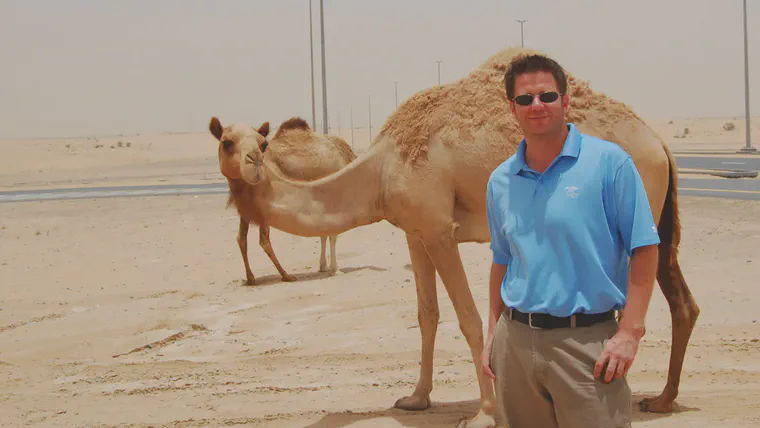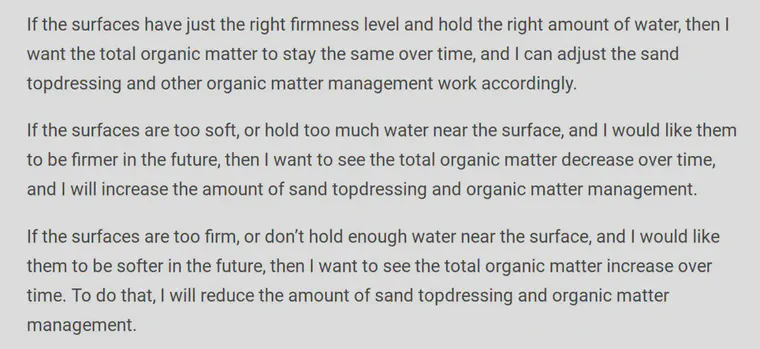Maximum soil organic matter, not minimum, should be the goal
Total organic material testing (OM246) can be used to find the maximum level of surface organic material that allows the desired playing conditions
I like to test the total organic material at the surface of a turfgrass rootzone in autumn. Doing the testing in autumn captures the majority of the growth, accumulation, decomposition, removal, and dilution that has happened during the previous year.
I’ve been doing OM246 tests to measure the total organic material (OM) for a few years now.
I’d generally like to have the OM as high as possible, while still producing the desired playing conditions, but I have noticed that golf course superintendents, when they receive the test results, often have an initial response wanting the organic matter to be lower, lower, lower.
In a lot of cases, that’s a mistake. Let me explain how I’d try to think of this. Let’s consider the opposite—soils with extremely low organic matter.
The worst turf growth is going to happen in soils with low OM. Think of growing grass in coarse sand with no OM. Think, perhaps, of the desert.

It takes a lot of water, and a lot of nutrients, to produce a good turf surface in a coarse sand with no OM. There are all kinds of difficulties involved with managing nutrients and water to produce a good turf surface when the soil doesn’t have much OM. Obviously, more OM in a sand rootzone is going to be better than too little OM, up to a point. And the OM246 testing can be used to identify that point.

I’m confident that an immediate reaction to want the total OM to be lower is a mistake because I can predict that for most golf courses, when you do OM246 tests on a set of putting greens, the best greens, the healthiest ones, come back with the highest OM. And the weakest greens have the lowest OM.
I suggest that this testing be used to find the level at which the best conditions are achieved. This can be thought of as a site-specific maximum OM, that you’d like to get close to but not exceed—as a ceiling rather than as a floor that you keep trying to get to. This will maximize the benefits that come from OM, achieve the desired playability, and minimize disruptive OM dilution and removal work.
One more thing: the text below is a screenshot from another post about OM246 testing, explaining the three possible things one will do after seeing the data. Within the context of the playability issues mentioned below, the highest level of soil organic matter that allows for those conditions, that’s what I’d be aiming for.
